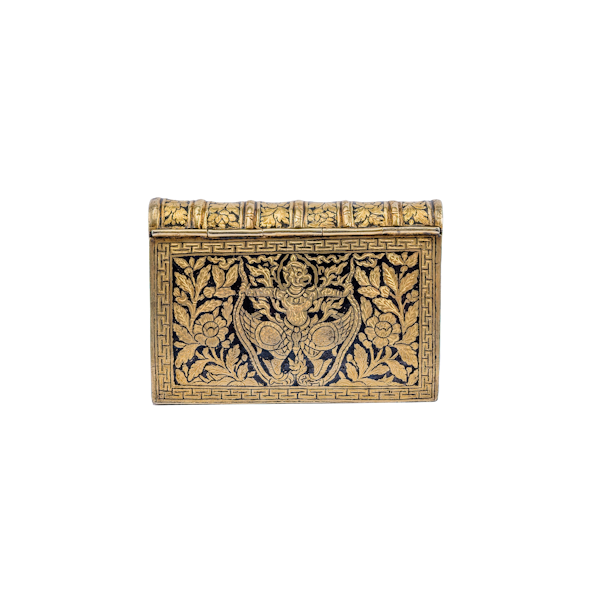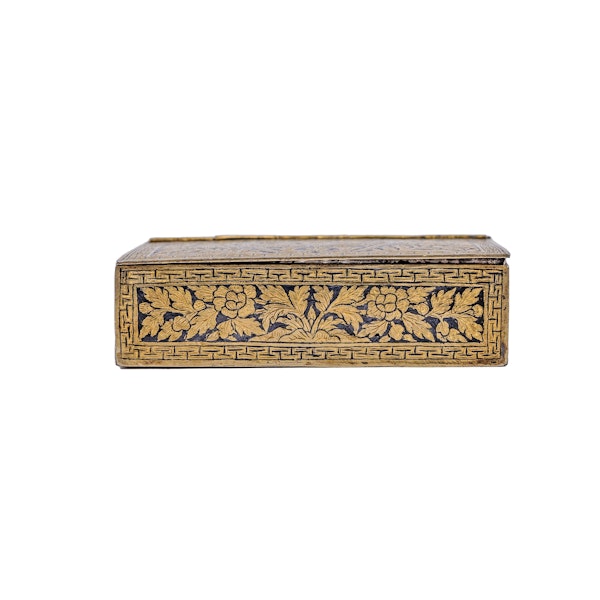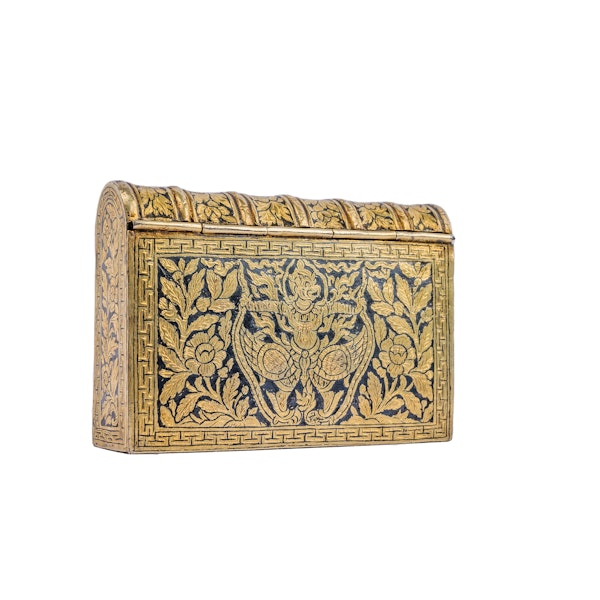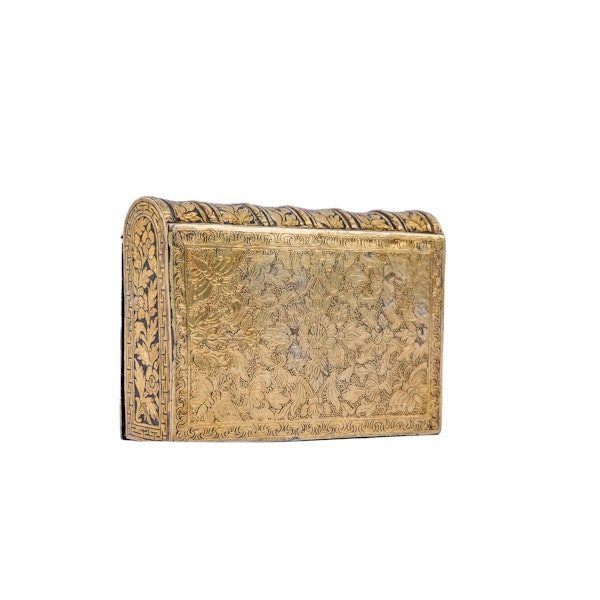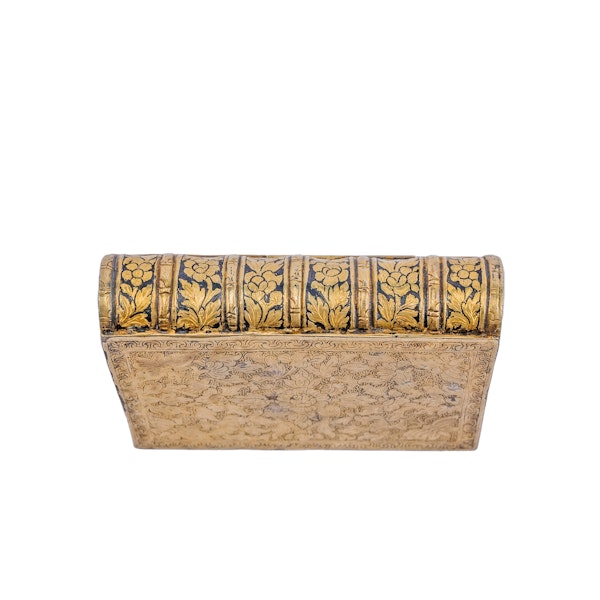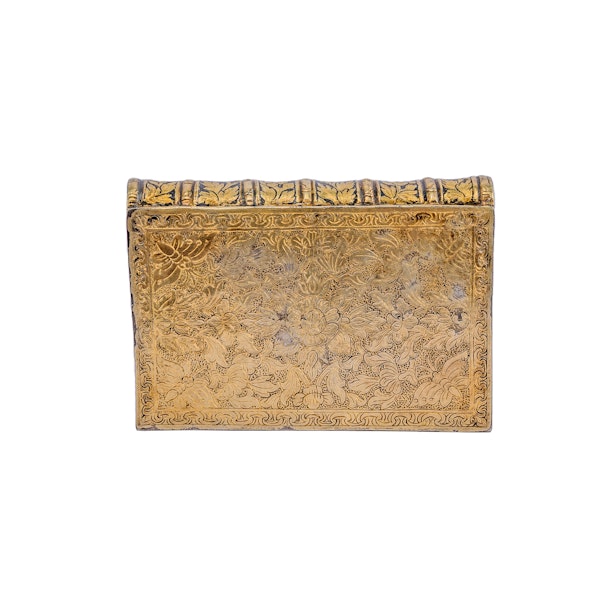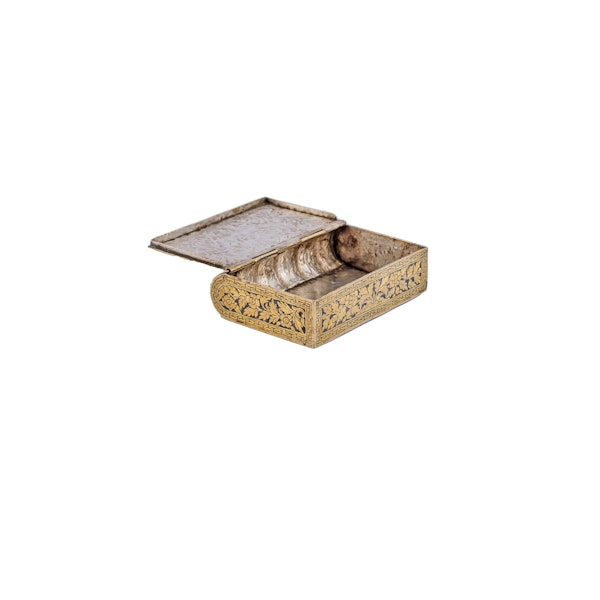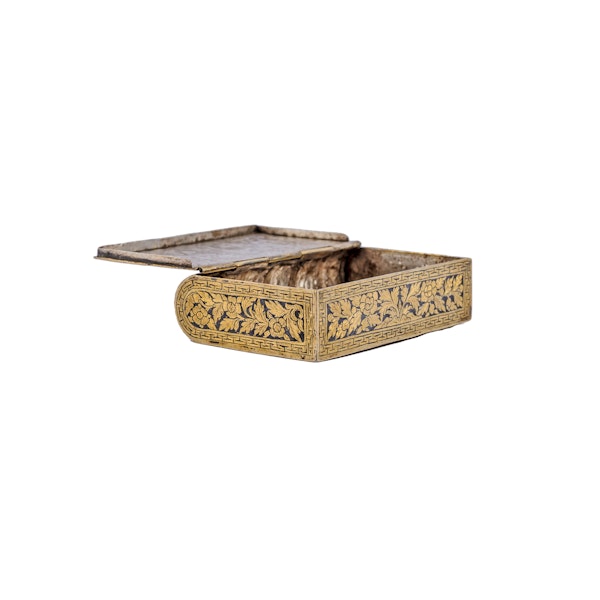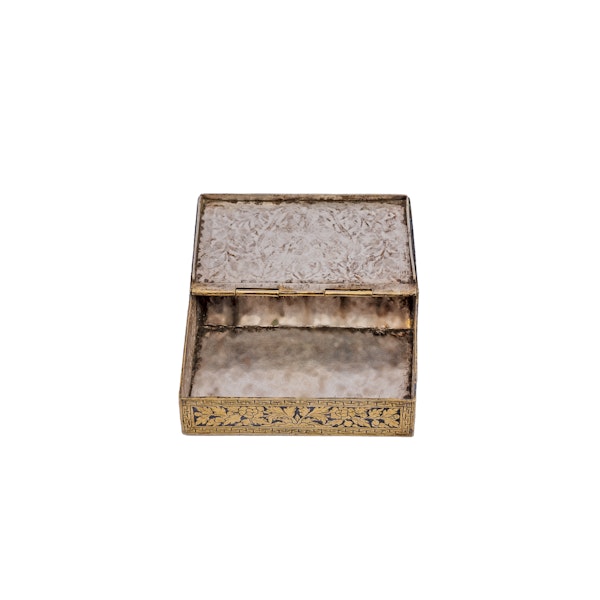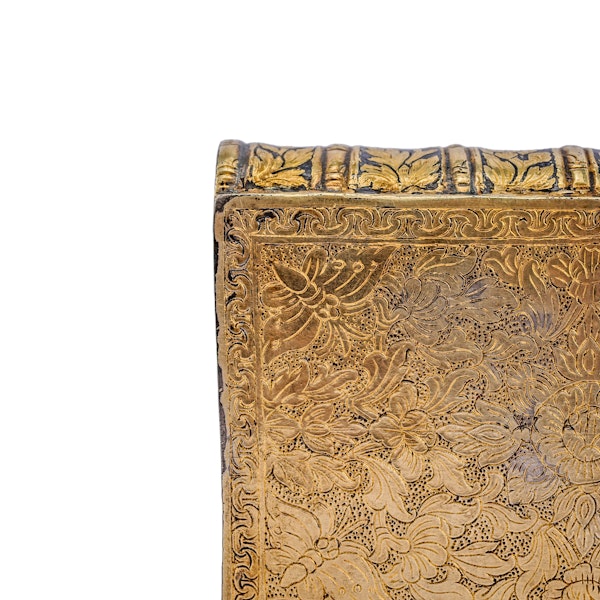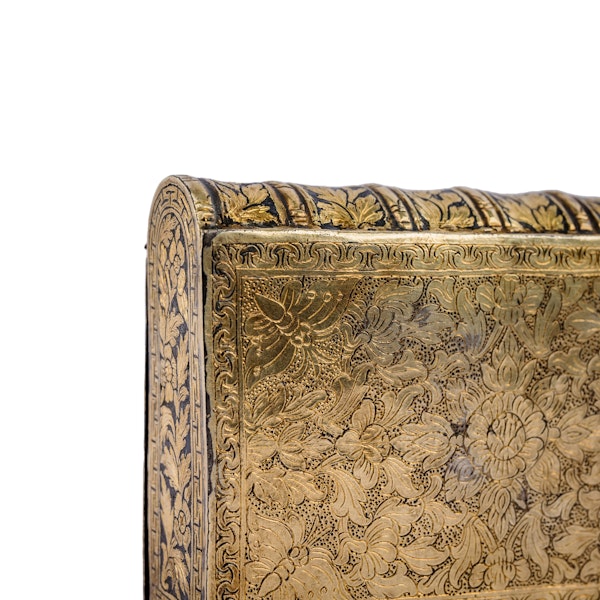Thai Silver Gilt and Niello Book Shaped Table Snuff Box 19th Century
Thai Silver Gilt and Niello Book Shaped Table Snuff Box 19th Century
£3,250.00
Description
This exquisite silver gilt and niello table snuff box is a very fine and unusual example of this art. The style and sheer quality of the ornamentation suggests it was made in the 19th centuries. The form of the box is most unusual and replicates a leather-bound book with distinctive ribbed spine. Every side of this box, including the underside, has been finely ornamented; the sides and cover with niello and chased gilded silver elements and the underside with chased and gilded silver only. The craftsmanship is excellent and very assured.
This box would have been an object of high status commissioned by either a member of the Thai ruling family or by a high-ranking colonial representative for their own use or as a diplomatic gift. The European form strongly suggests it was intended for a European recipient. There is a discernible Chinese influence in the design, notably the meander borders to the panels, the beautifully rendered butterflies in the dense vegetation to the underside and also the finely punched background of the same panel.
Scholars disagree as to where and when the technique of niello was invented but they are agreed that since ancient times there have been complex trade and cross-cultural interactions between the peoples of the Asian countries with those of the Indian sub-continent, the Middle East and the Mediterranean. It cannot be proven that the niello technique was created in Thailand, but the art was certainly popularised and perfected there.
Historical evidence from Thailand shows that the first recorded instance of nielloware can be found in ‘The Royal Family Laws’, written between 1448 and 1488. One of these laws, known as ‘The Three Seals Law’, states that “a land holding nobleman in the 10,000-order rank was entitled to govern a city and to hold a black Niello-ware ceremonial pedestal and tray to show his official rank”. Importantly, niello was used to signify the owner’s high rank and important status. The association between niello and high status continued in Thailand until recent times with fine niello objects considered as to be appropriate gifts for Thai and foreign kings, the nobility and visiting foreign dignitaries.
On the Isthmus of Kra, the city of Nakhon Si Thammarat, also known as Ligor or Lagor, was the capital of the Tambralinga (Tampornling) kingdom and the principal production centre and training centre for niello artists. Niello wares made in Nakhon Si Thammarat were supplied to the courts of Ayutthaya and Bangkok. The Thai words used to refer to nielloware are khruang thom.
The word niello derives from the Italian form of the Latin word ‘nigellum’, meaning black. Sir George Birdwood proposed the following definition for niello to accurately describe the process and to distinguish it from similar arts such as bidri and enamelling.
“Niello is the process and the result of annealing (literally ‘blackening’ or ‘nielloing’) or fixing by fusion on a decoratively incised polished metal (usually silver but occasionally gold) surface, an opaque, black (non-mercurial) amalgam of silver, copper and lead.”
The actual process is quite difficult, very laborious, highly unpleasant and dangerous, due to the noxious sulphurous fumes given off by the oven and the high firing temperatures involved in the process. Because of these difficulties, Indian and Burmese silversmiths did not often produce Niello wares, but some Thai silversmiths specialised only in this art.
To the centre of the cover is the monkey God, Hanuman. Hanuman is worshipped for his physical prowess and daring feats but particularly for his constant unwavering loyalty and selfless devotion to Rama. His stance here indicates that this is Hanuman Virmaruti or, a depiction of Hanuman in his courageous form. He stands erect, as if ready for battle, and is crushing a small demon underfoot. His arms are outstretched, holding onto a length of rope at either side. Hanuman’s tail is looped around his head protectively as little flame like curlicues can be seen to either side of his back and head.
In Hindu mythology, Hanuman, is the commander of the monkey army, and his exploits are narrated in the great Hindu Sanskrit poem, the Ramayana. One of these stories tells of when Hanuman’s tail was set on fire, which is almost certainly what is alluded to here. Another tale tells of when Hanuman flew to the Himalayas and returned with a mountain full of medicinal herbs to restore the health of the wounded in Rama’s army. The arching floral sprigs to either side of him, probably poppies, may reference this. The whole panel has been surrounded by a gilt meander border. The niello panels to the sides are surrounded by the same meander border but contain floral and foliate sprigs.
The chased and engraved gilt panel to the underside is very fine and shows great artistry. This is a symmetrical composition with a finely rendered butterfly to each corner. Surrounding the central lotus flower are lotus, orchids and other flowers.
Antique Thai gilt niello is well represented in museum collections around the world, particularly in the collections of Nakhon National Museum, Thailand, National Museum of Thailand, Bangkok and the V & A Museum, London
| item details | |
|---|---|
| Origin | Asian |
| Period | 19th Century |
| Condition | Excellent |
| Dimensions | Weight: 202 grams |
| Diameter | Length 10 cms; Width 6.7 cms; Depth 2.6 cms |
Product REF: 10065
